On a winter’s day in New York City early in 2020, urban religion expert Tony Carnes walks down Broadway in Elmhurst, Queens, a boulevard that can be defined as crowded grit, with a single Starbucks as a concession to gentrification.
Some refer to the neighborhood as the most ethnically diverse in the nation, if not the world. The street is adorned with signs in Spanish, Chinese, Korean, Tagalog, and, occasionally, English.
Most would marvel at the diversity of ethnic dishes for sale. But for Carnes, there’s more to see on this cold winter afternoon amid crowded streets that would later empty during the spring novel coronavirus crisis.
As he munches on lunch in an Asian food court, Carnes identifies the religious symbols adorning the modest food stands: a Filipino Christian cross, Buddhist symbols, and Islamic crescents.
For Carnes, the area is a faith cornucopia, a glimpse at a Big Apple he insists is one of the most religious places in the country. Move over, Bible Belt, he says: New York is where faith reigns and secularism takes a back seat. Although the novel coronavirus has shifted what some of the city’s religious expression looks like, the city’s vibrant religious identity remains even in the aftermath of pandemic.
A new look at an old city
Carnes, a sociologist, evangelical Christian, and former writer for Christianity Today, is a Texas native who has lived much of his life in New York. Today, he chronicles the rich and diverse faith life of his chosen home via his website, nycreligion.info, which highlights the religious dynamism of the nation’s largest city.
As an evangelical, Carnes was regularly told by his religious compatriots that New York is Sin City. Or at least it is post-Christian, a place where religious faith just doesn’t fit into the secular city’s mores.
The hint was that maybe he should move to save his faith.
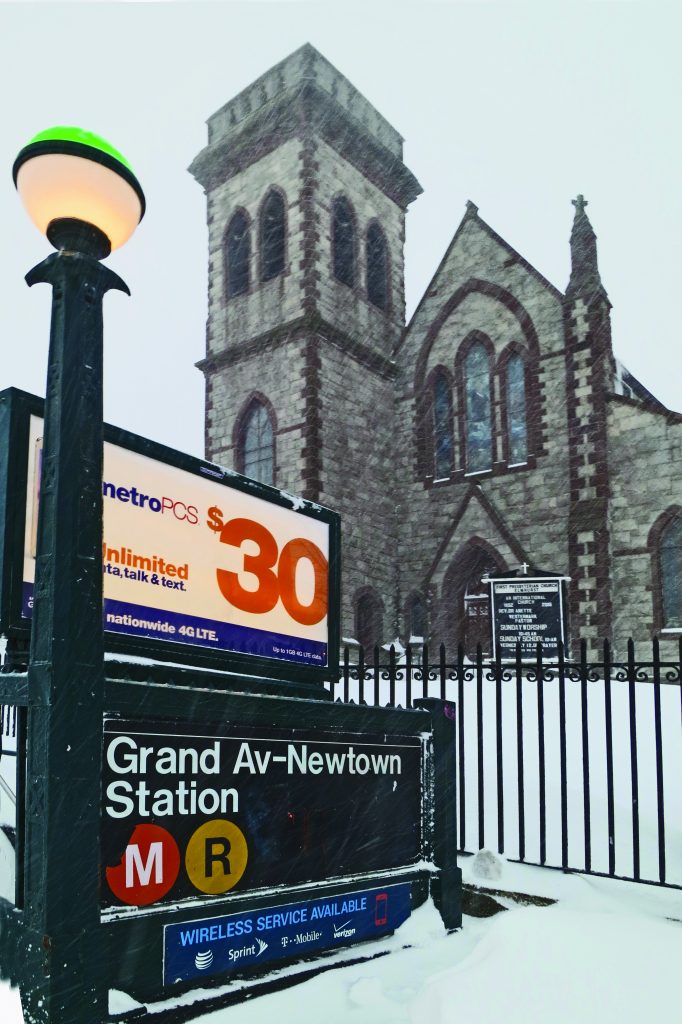
The media portray a similar narrative: At one recent gathering, the city’s religious journalists decried the growth in numbers of so-called Nones—young adults with no religious affiliation. They noted the well-documented trend of Millennials abandoning organized church life, often in search of being “spiritual, not religious.” Churches are emptying out, and their congregations are getting grayer. It’s just a matter of time before Americans begin to mimic the faith observance of secularized Europe, they wrote.
But Carnes has heard that song before, and he has long been attached to a far different tune.
“I was told by people living in the suburbs that there were no Christians in New York. They meant that the church was declining and was irrelevant,”Carnes says, speaking of the late 1970s, when he first began to explore faith life in the city.
At the time there was reason to believe the city’s religious observance was in massive decline. Harlem had 199 synagogues at one point, but they were eventually whittled down to one. Black and Latino Christians were fleeing to the suburbs. Mainstream Protestant churches were closing, and Catholic parishes were struggling, eventually leading to widespread closures.
But as the city went through what was seen at the time as a precipitous decline, through near bankruptcy and sections of the South Bronx being burned to the ground, Carnes saw something different emerging. He saw a religious revival, even if no one else seemed to notice it. Beneath the embers something new was arising—a kind of resurrection, in Christian terms.
Take the case of Marc Rivera. In the late 1970s the native of the Lower East Side of Manhattan was working for IBM, safely ensconced in the suburbs. It was during the bad old days in a city veering on bankruptcy and rising crime. A church burned down in his old neighborhood, and, instead of just lamenting another sign of decline, Rivera returned and became its pastor, rebuilding the church. He is now one of the city’s senior and most respected evangelical leaders.
From the ashes
As a sociologist and religion journalist, Carnes chronicles what he sees as the religious transformation of New York. As the world of electronic journalism began to develop in the 2000s, he obtained funding for his website and had young reporters trod the streets, describing what was happening in out-of-the-way nooks and corners. Street by street, his team jotted down the locations of storefront churches that were mushrooming throughout growing immigrant communities.
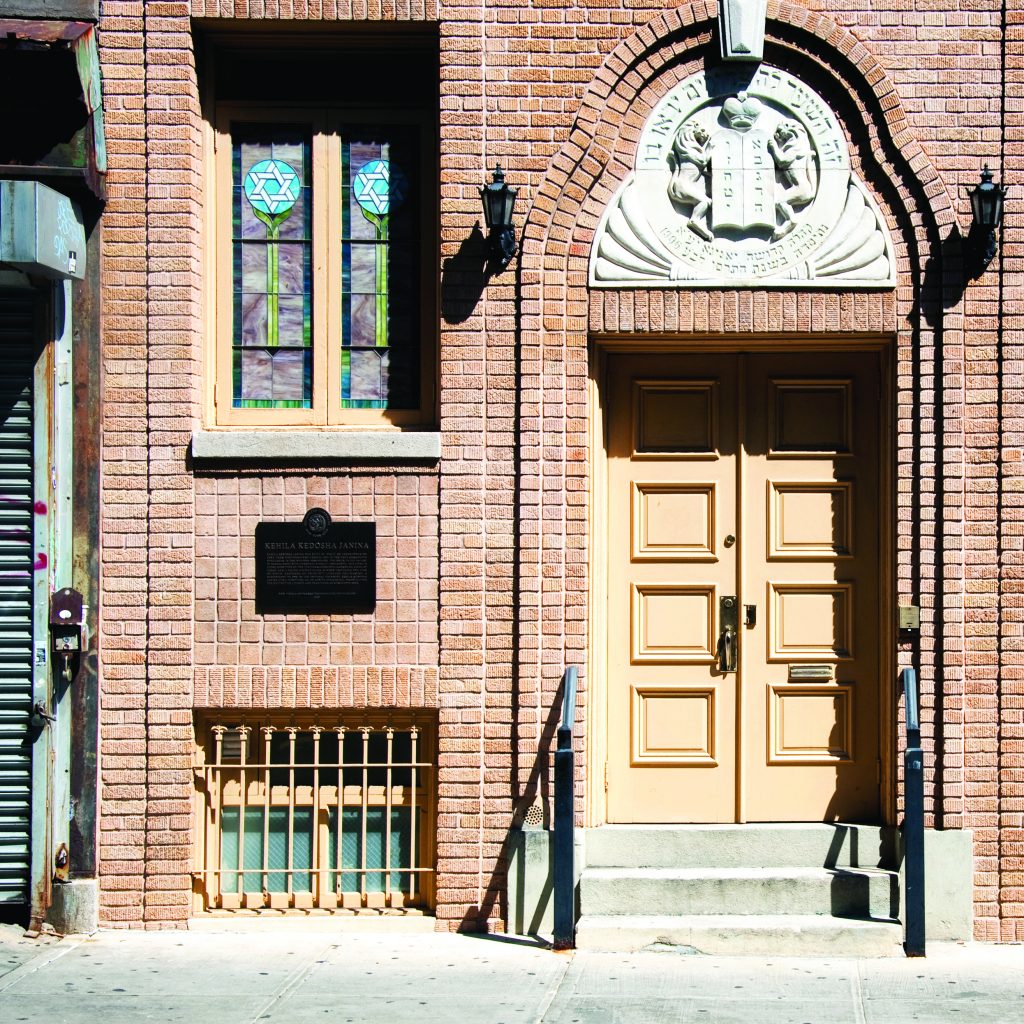
What they discovered was a new Protestant evangelicalism emerging, stately old hymns giving way to gospel rock, Sunday best attire conceding to casual Friday. Those megachurches appealed to hip urban professionals.
There was also the immigrant scene: Urban evangelicalism began developing a salsa beat, opening small churches for a growing Latino population, especially in outer borough neighborhoods such as Elmhurst.
This was just the beginning: The growing Asian communities in the city—Chinese, Korean, Indonesian, and Filipino—were creating their own congregations or forming groups within established churches.
Carnes studied sociology at the New School in Manhattan, long known as a bastion of secular thought. When his professors told him that urban life was sliding inexorably down the path of secularism, he insisted they were missing what was happening on the street.
“What secular city?” Carnes remembers asking, a reference to the landmark 1960s work by theologian Harvey Cox.
Carnes found African American evangelicals, independent churches, Hindu temples, Taoist and Hindu congregations, and a thriving Sikh community throughout New York’s boroughs.
Carnes found African American evangelicals, independent churches, Hindu temples, Taoist and Hindu congregations, and a thriving Sikh community throughout New York’s boroughs. One evangelical church in Brooklyn claimed 31,000 members. One South Bronx neighborhood reported 44 Christian churches; Carnes’ researchers found there were actually 156. Previous studies indicated there were two Buddhist temples in Queens; Carnes discovered 14. Orthodox Jews, Carnes found, were now the largest Jewish community in the city, clustering in neighborhoods in Brooklyn, their large families gradually overcoming the numbers established by mainstream Jewish groups. Mosques, even after the attacks on Muslims after 9/11, numbered in the hundreds, not in the dozens as previously thought.
Although many see subway graffiti as a sign of moral decline, Carnes looks at it differently: He noticed that TAKI, a famous graffiti writer, often painted Christian symbols, reflecting his own Greek Orthodox background. A mural in the battered Bronx shows a crucified Christ, with needles in his arm, a faith statement about the scourge of drugs.
The religious stew pulsates through the streets of the city. It may be ill-defined in many places, sometimes not divided by neat denominational lines, but it is there nonetheless. Today on Carnes’ website are articles and videos on global Hinduism in New York, urban Muslims, and how Catholics from the Dominican Republic living in Washington Heights are likely to identify themselves as charismatics, melding themselves into the storefront evangelical churches that dot the immigrant community, all the while participating in a traditional Catholic parish that overflows with worshippers on Sundays.
A Catholic revival
Catholics are a big part of New York’s religious identity, says Carnes. But he thinks many Catholics are suffering a hangover from the church’s sexual abuse scandals. There is, he says, a lack of confidence, a sense that the faith moment has passed American Catholics by.
But some immigrants are telling, and believing, another story. Although older groups of Catholics continue to settle in the suburbs, their immigrant replacements embrace faith in creative and different ways.
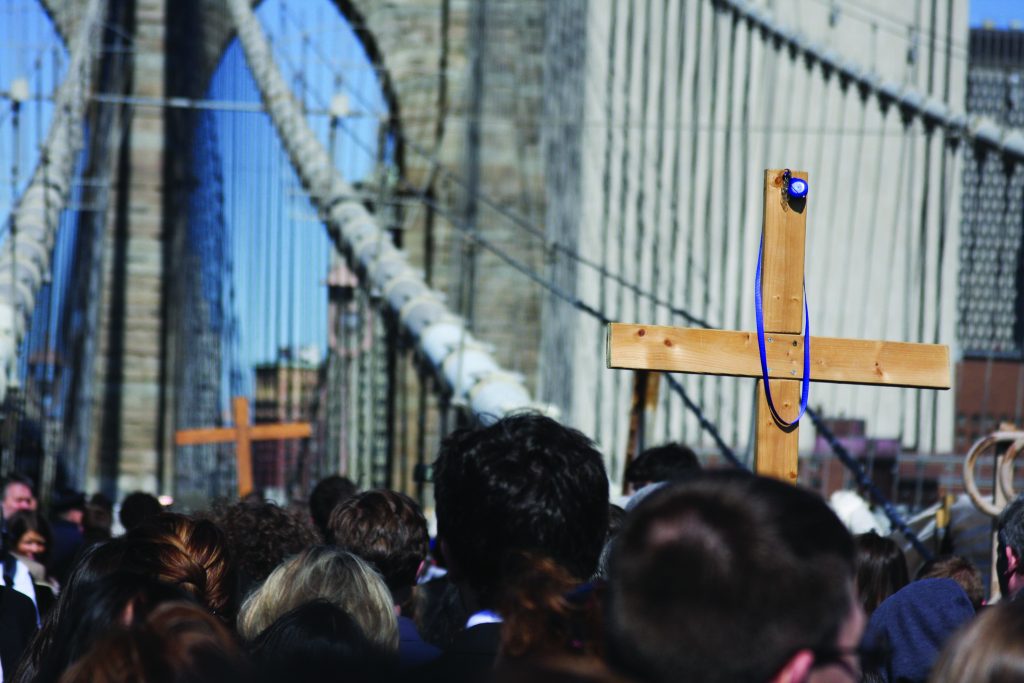
Before the novel coronavirus pandemic, St. Bartholomew Church in Elmhurst offered Masses in English, Spanish, Tagalog, Bengali, and Indonesian for some 5,500 parishioners. Even during the pandemic, thousands participated via online Masses in English and Spanish.
Flushing, Queens is home to the largest Chinatown in the city. A large Catholic Korean community lives in the neighborhood. Immigrants flock to baptismal classes at St. Michael’s Church there, including hundreds each year entering the Catholic Church on the Easter Vigil.
Our Lady of Pompeii Church in Greenwich Village, Manhattan, founded for working-class Italian immigrants, now ministers to a more professional crowd. The pastor keeps up the Italian connection by reaching out via social media and continuing an arts program for Italian émigré professionals.
The Church of St. Paul the Apostle on Manhattan’s Upper West Side, meanwhile, reaches out to young adult Catholics, including the city’s large LGBTQ community, with an evangelization approach common to the Paulist Fathers who run the church. The Church of St. Francis Xavier in Chelsea, Manhattan, a Jesuit parish, is known for both its soup kitchen and its outreach to the LGBTQ community.
The Basilica of Our Lady of Perpetual Help in the Sunset Park section of Brooklyn is a parish that never relinquished its immigrant vibe. It is now a haven for Central Americans, Mexicans, and Chinese—new immigrants who are attracted to the parish liturgies in English, Spanish, Vietnamese, and Chinese—as well as a thriving legal advocacy for immigrants run by Redemptorist Father Ruskin Piedra, an octogenarian of Cuban background.
An ecology of faith
Back in Elmhurst, scholars study the neighborhood as a laboratory for how diverse religious communities function.
Richard Cimino, a sociology professor at the State University of New York at Old Westbury and editor of Religion Watch, spent much of 2018 and 2019 tracking religious life in the neighborhood with a colleague, Hans Tokke, a professor of sociology at New York City College of Technology in Brooklyn.
Catholics . . . are good at keeping people together, at least tenuously, under one church umbrella.
Within a few blocks, Cimino spent time with 15 religious congregations, including Buddhist, Jain, Catholic, Episcopalian, Lutheran, Baptist, Muslim, and megachurch evangelicals. He found regular patterns.
In mainstream Christian churches, immigrant groups tend to operate on their own within the umbrella of a more established congregation. St. Adalbert’s, for example, a traditionally Polish Catholic parish, now has services for Filipino Catholics as well. St. James Episcopal Church hosts a potluck parish food festival highlighting Indonesian fare.
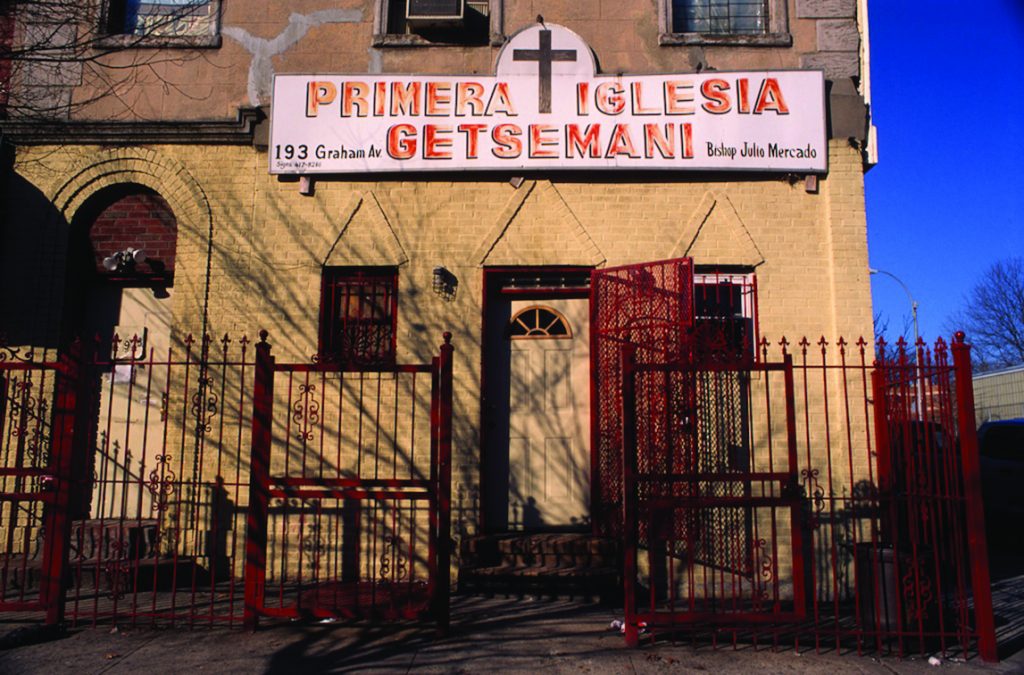
There is little evidence that the great American melting pot works when it comes to Sunday, says Cimino, particularly in Catholic parishes. Instead, immigrant groups bring Catholicism from their home countries and, in a way, join together but separately, with regular liturgies for separate language and ethnic groups.
“Do they get along? Do they interact much? Not much,” says Cimino. But Catholics in September 2020 particular, he says, are good at keeping people together, at least tenuously, under one church umbrella. Unlike other Christian groups, Catholics don’t tend to split off into smaller congregations. The Eucharist remains a defining feature.
In Elmhurst the Catholic parishes have navigated changes from Germans and Irish, many of whom moved to the suburbs, to new immigrant groups, many from Asia and Latin America. “It’s a neighborhood ecology approach,” says Cimino.
Meanwhile, on Queens Boulevard, the other main thoroughfare that cuts through Elmhurst, two new megachurches have sprung up: New Life Fellowship and The Rock, a congregation that took over a historic movie theater. Each boasts more than 1,000 congregants.
The megachurches are separate but have a similar appeal to the groups at established Catholic parishes, says Cimino. These parishes, along with other established mainstream Christian churches, take in new immigrants and reinforce language and culture from the old countries. Their children, meanwhile, often gravitate toward megachurch congregations, which are sometimes seen as an aid to navigating professional work and family life.
Faith in the midst of pandemic
The religious ecology of the city was thrown out of whack during the pandemic. Carnes would be awakened by the sounds of ambulances on their way to Elmhurst Hospital, the city facility that led the evening newscasts, as thousands battling the virus waited outside during the early days of the pandemic in March. Some nights the hospital experienced more than a dozen deaths.
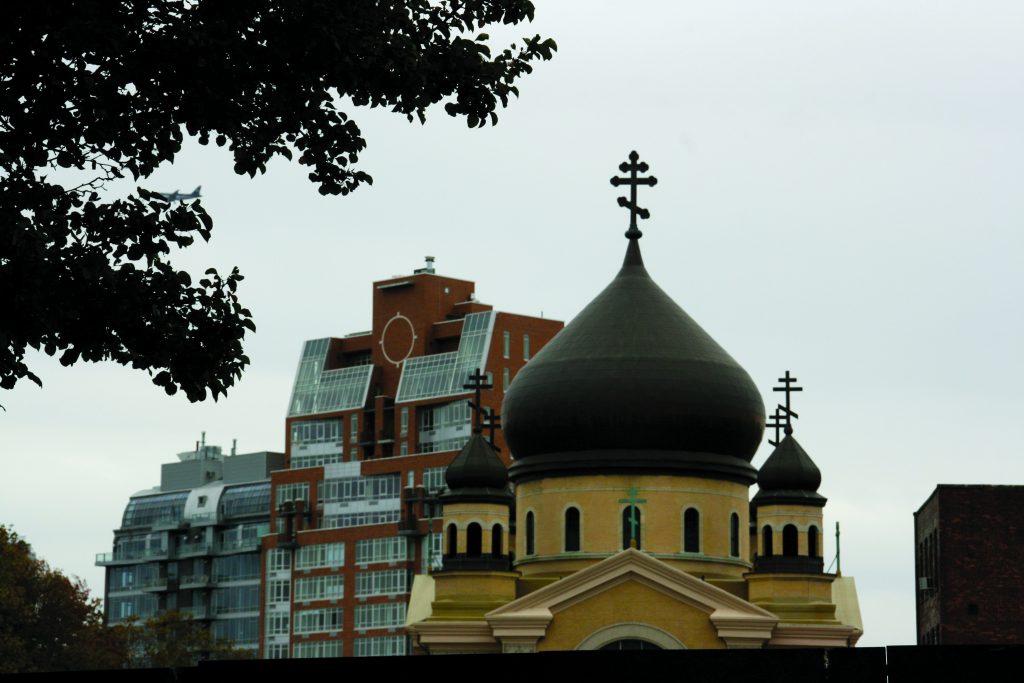
For many months, New York City had generated about a third of all the deaths from COVID-19 in the United States. The epicenter of that epicenter remained the immigrant communities of the Bronx, Brooklyn, and Queens. Thousands died among the 600,000 people clustered around the 7 Train, which traverses Elmhurst and nearby communities.
By the end of May, more than 60 parishioners from St. Bart’s had died from the virus. Other parishes reported similar tolls. At Our Lady of Sorrows Church in Corona, Queens, the toll included the illness of Father Raymond Roden, the pastor, and deaths and unemployment among nearly 10,000 parishioners, many of whom are undocumented immigrants.
Carnes, living in the midst of the pandemic, is already seeing patterns. Evangelical megachurches responded with a renewed focus on technology. Some megachurch pastors debated online about how long online sermons should be (some objected to 45-minute limits).
Carnes says Catholic parishes both were hit hard and responded effectively in many ways, including in online liturgies. In some cases, parishes became centers of food aid and support, directing assistance to undocumented immigrants, who are ineligible for most federal support programs. Catholic Charities ran food handouts in Elmhurst and Corona, as well as in Brooklyn neighborhoods. The Diocese of Brooklyn and the Archdiocese of New York were able to present regular televised Masses.
“The priests are exhausted, and in some areas the number of people sick or dead is frightening.”
Priests, including Father Jorge Ortiz-Garay, a Brooklyn priest noted for his work among his fellow Mexican immigrants, were among the fatalities (Ortiz-Garay is thought to be the first priest in the United States to die from COVID-19). Parishes suffered with a sharp decline in income, as offertory collections became impossible.
“The priests are exhausted, and in some areas the number of people sick or dead is frightening,” says Carnes. Catholics in particular missed the church’s elaborate mourning rituals. Distancing often required those who died to do so alone, without their family or a parish priest. Cemeteries limited the number of family members who could visit a gravesite.
“The loneliness in death without a priest is devastating,” says Carnes, noting Catholic sensibilities, especially acute in immigrant communities.
In the midst of the pandemic, an eerie quiet pervades the usually crowded streets of Broadway in Elmhurst, broken only by the sounds of ambulances rushing to the hospital. The devastation wrought to the now shuttered New York City restaurant industry leaves wide swaths of desperation, including immigrants, most without documents, unable to access government aid. Many rely on church charities.
The city’s future is in serious question. Can a crowded metropolis emerge in an era of social distancing? Carnes, for one, will remain, the chronicler of religious life among the immigrants. Those churches, mosques, and temples, he believes, will have a say in how this epic story develops. Faith, in all its abundant forms in New York’s immigrant communities, is sure to continue. Those religious symbols in the Asian food court assuredly will have more use.
This article also appears in the September issue of U.S. Catholic (Vol. 85, No. 9, pages 20-25). Click here to subscribe to the magazine.
Image: Flickr.com/Chris Goldberg


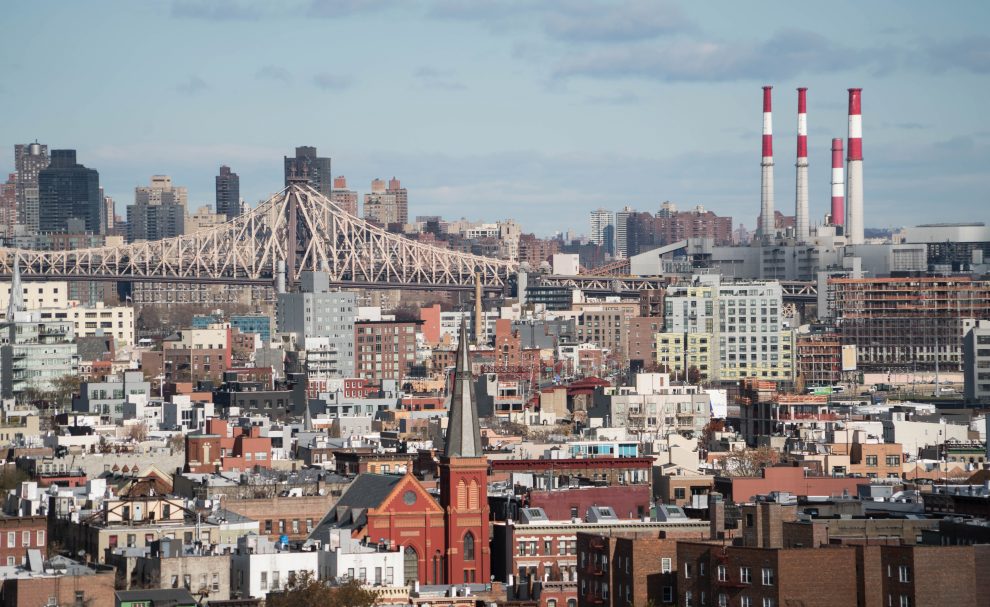










Add comment